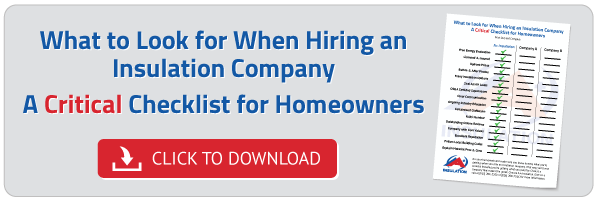 Unless your home was specially constructed for energy efficiency, you can probably reduce your energy bills by adding more insulation. This is especially true if your home is older, but even adding insulation to a newer home can pay for itself in just a few years. There are some special considerations in each area of your home when it comes to insulation installation. This article from the insulation professionals at A+ Insulation will give you some tips on insulating a cathedral ceiling.
Unless your home was specially constructed for energy efficiency, you can probably reduce your energy bills by adding more insulation. This is especially true if your home is older, but even adding insulation to a newer home can pay for itself in just a few years. There are some special considerations in each area of your home when it comes to insulation installation. This article from the insulation professionals at A+ Insulation will give you some tips on insulating a cathedral ceiling.
Related Read: 90% of U.S. Homes Are Under-insulated. Is Yours?
Basic Insulation Tips for Cathedral Ceilings
Cathedral ceilings are beautiful, but they must be properly insulated to keep ceiling temperatures closer to room temperatures. To do this, the cathedral ceiling must be built with space between the roof deck and your home’s ceiling for adequate insulation and ventilation. If your cathedral ceiling is built this way, it will have truss joists, scissor truss framing, or sufficiently large rafters. The best way to insulate this type of cathedral design is with batted insulation. For example, cathedral ceilings built with 2×12 rafters have space for standard 10-inch batts and ventilation.
Unvented Cathedral Ceilings or Hot Roof Designs
There is another construction option for cathedral ceilings called unvented, sealed, dense-packed, or hot roof design. The term hot-roof is misleading. The roof is not that much hotter than a normal roof, maybe 1 to 5 degrees hotter in surface temperature. A hot roof is one where the insulation is directly attached to the roof sheathing so there is no ventilation required. Don’t attempt this roof insulation with fiberglass or cellulose insulation; it’s not allowed by building codes.
Two Main Options for Insulation with Hot Roof Design
There are two popular options you can use when it comes to choosing the type of insulation for a hot roof. The first method is foam sprayed in place. The second uses foam board, generally placed on top of the exterior roof sheathing. Where spraying the inside with foam doesn’t require you to redo the roof, insulating with foam board does require that the roof be removed. If you are replacing your roof, that’s the ideal time to add foam board insulation. Otherwise, the spray foam may be your best choice. If you’re unsure about your cathedral ceiling, give A+ Insulation a call and we can come to your home and give you advice about insulating your cathedral ceiling as well as a free quote!
Call A+ Insulation for all of your insulation questions and needs at (913) 281-2250 or (816) 268-7511.
Make sure you know what to look for in an insulation company before you hire one. Click the image below to download a free checklist to help you make an informed choice.
